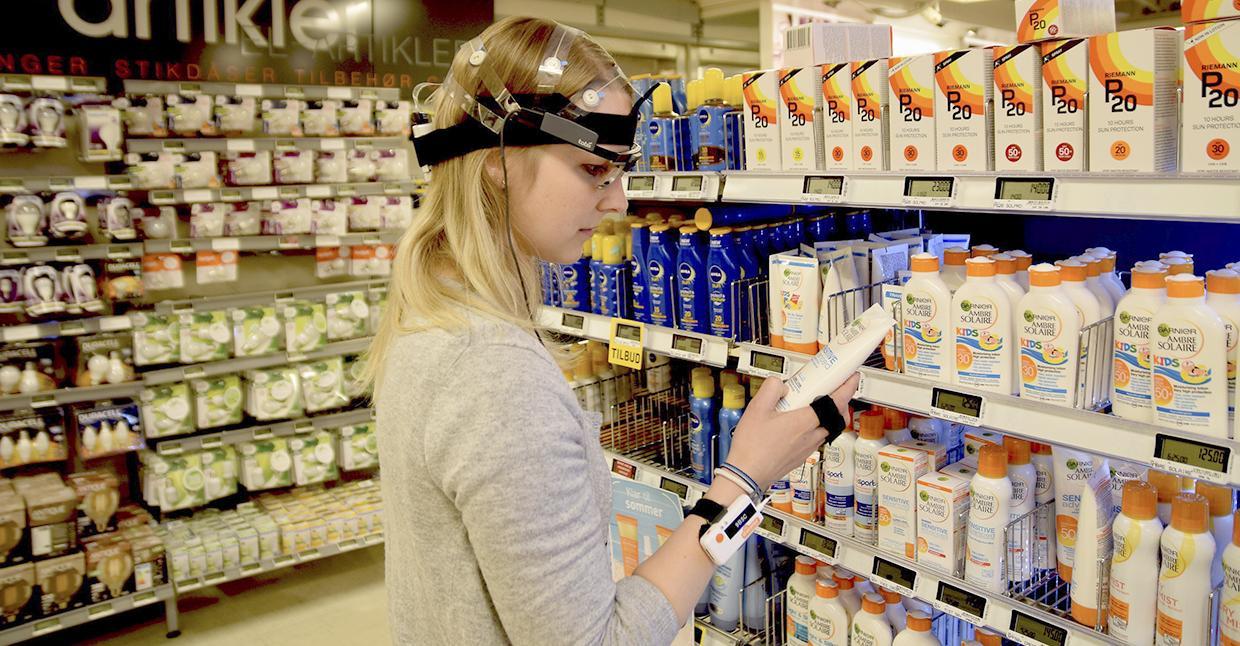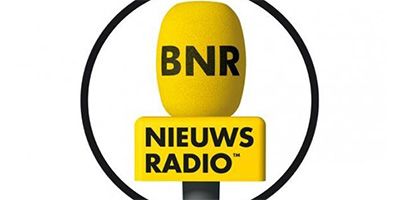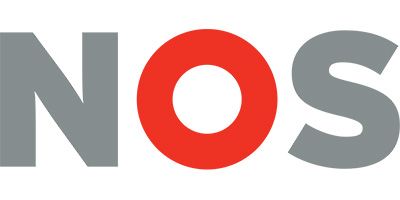
Neuromarketing in Retail: Increase Your Turnover with Brain Research (EEG) and Eye Tracking
Would you like to dive into the brains of your customers in order to find out whether or not they experience choice-related stress? Or would you like to learn how easy your routing really is? Uncover the effects of signing during the shopping trip? In short, do you want to measure how your customers actually come to their choice in your store?
Good news. That’s actually possible.
Not by asking the customer, but by measuring brain activity. Neuromarketing enables you to take a look into the unconscious brain of the consumer.
Today, neuromarketing finds its way into retail research more and more often. For good reason, because people are hardly aware of their own choice process. Actually, at least 95% of our behavior occurs completely subconscious. Since traditional market research only captures conscious thoughts, its usefulness might seem sparse at best.
Human beings do a great job in rationalizing every choice after it’s made. But in fact, we hardly know why we chose for that one specific brand of butter yesterday.
Neuromarketing research methods measure brain activity and other automatic biological reactions. It is this what makes these techniques very suitable for research questions outside the scope of traditional research methods, for example:
- How do customers experience the shop experience or specific parts of the shop?
- Is the shelve logically arranged?
- Does the packaging grab enough attention?
Reveal valuable insights about your customer
It took a while before brain research found its way towards the world of retail. In contrast to the world of advertising and usability, retailers had to be a bit more patient before diving into the consumer brain.
Reason: research equipment could not be used on the walk – which is an important prerequisite for proper naturalistic research in retail.
After many years of technological improvements, techniques such as Eye Tracking and EEG are now portable and comfortable. Research participants are no longer restricted to laboratories, but are able to move freely. Just like any other shopper.
This opened the gates to valuable neuromarketing techniques to be put into the retail sphere.
Eye Tracking
Eye tracking measures what the customer is looking at. This gaze data reveals shopping hotspots through duration, time to first exposure and return frequency metrics. And maybe even more important, eye tracking reveals that elements do not even reach the shopper’s cornea and beg for improvement.
Eye tracking unearths an essential part of the searching process.
EEG
Electroencephalogram, better known as EEG, reveals the other important element of the searching process: which emotions and mindsets are activated by the shopping environment? EEG grants deeper insight into emotional and motivational processes within the brain.
EEG allows for measuring the overall appeal of the shop, but also allows for measuring the effect of its smaller components, such as the attractiveness of a specific shelve or packaging design.
What EEG tells you about your customer, and what it doesn’t
EEG research enables you to quantitatively measure the affective and emotional states of your customer. But let’s not overstate things; EEG is not a mind reader. It will take a while before neuroscience has reached that final frontier.
While certainly no mind reader, EEG is capable of measuring motivational and emotional states. The following four metrics are validated both inside and outside the lab:
Desire – the extent to which the shop or to product stimulates action or purchase intentions as a result of positive or negative emotions.
Engagement – the extent to which the shop and the products activate attention and are experienced as personally relevant.
Workload – a measure of the ease of the shopping experience. The higher the workload, the more difficult the shop will be to process. In turn, difficulties in processing will lead to more choice-related stress.
Distraction – the degree to which the consumer experiences the shop, the shelve, or product as illogical. This grants insight into unexpected and confusing moments during the shopping trip.
Together, these four metrics deliver the most important insights with regard to emotional experience, and the choice-related stress of your customers.
Here’s how to increase retail turnover with neuromarketing research
Imagine: the sales of one of your product categories don’t quite meet your expectations. You’re in the dark about the exact problem. Is your assortment size suboptimal? Is the signage is insufficient? Or can it be the case that your prices are simply too high?
Neuromarketing research helps to capture the specific the moments in the choice process during which consumers experience highest levels of stress, distraction, and/or desire.
By illuminating the strengths and weaknesses of the purchase process, fruitful chances for improvement become clear. This way, you can work straight towards conversion optimization.
Let’s continue with an example.
Example of Retail Neuromarketing
Imagine a supermarket in which the wine shelve gains suboptimal results. In order to improve sales, you decide to conduct a combined EEG and eye tracking study.
From the eye tracking recordings, it seems that when the customer is approaching the wine shelve, clear zigzag patterns are present. This might indicate an unclear arrangement of the shelve. In order to further investigate the reasons for the visual patterns, you have to take a look at the EEG data.
EEG data further confirms that the customer’s brain is overly active when making sense of the product assortment. It’s clear: customers do not understand the shelve arrangement and cannot find the product they were looking for.
Exactly what you were afraid of.
But how do you solve this?
In order to optimize the shelve, it’s essential to know the basic customer gaze patterns. People tend to search for the right shelve by identifying a prototypical product. In this case, people will look for something bottle-like signaling the beverage department in the supermarket – which is, luckily, easy findable. After this rough way of categorizing, the so-called horizontal scanning starts. Now, people are searching for the right product category; the wines. Once found, people will start the last phase of searching; vertical searching. They almost completed their search, but only have to search for their most-loved dry white wine between all the different bottles of white wine available in the shelve.
Zigzag patterns are a clear sign that the customer is experiencing trouble somewhere during the three steps described above.
Do your customers experience choice-related stress during the horizontal search? Consider to add some extra structure elements to your shelve. You might want to consider adding visual structure based on color. White wines can be found at the left-hand side of the shelve, rose-colored whines in the middle and red wines at the right-hand side of the shelve.
Another possible solution is to improve signing. You could locate higher-contrast signs on the shelves. Ideally, these signs communicate primarily via icons representing the different categories like white wine, red wine, rosé or bubbles. This idea is based on research that has shown that people process images light-years faster than text. For further clarification, the icons are ideally complemented with descriptive blurbs such as “dry white wines”, and “sweet white wines”.
Let’s say we implemented the improvements above and would conduct a second neuromarketing study. What would we see that signals an effective redesign? Because the shelve is now less taxing on the brain, the workload decreases, while approach motivation increases. Customers are more attracted to the retail environment, which is an important prerequisite for extra sales.
Keep in mind that this is just one insight gathered from neuromarketing research. A typical in-store study usually unearths more than a dozen improvements – a vast majority of them being quite cheap and easy to implement.
Conducting neuromarketing research in-store? Beware:
In-store neuromarketing research poses several serious challenges that the researcher has to overcome.
The culprit here is the moving customer. EEG, measuring electrical signals, is strongly influenced. Muscle activity spikes electric signals, which can let noise seep into the data. Special importance should be paid to muscles around the head. Those muscles are most likely to alter the data in unwanted ways. It would be ill advised to chew gum during an EEG…
It is essential to minimalize the influence of fluctuations in neurological activity due to movements of the participants. While a challenge, this can be done with the right post-processing of the data. Be sure that your neuromarketing research agency uses advanced signal decontamination procedures. This ensures that noise will be removed from the recording. All you want to remain are true and reliable insights.
Want to explore your customer’s brain with in-store retail neuromarketing?
Curious about how neuromarketing research will help you to create a better store – selling more products to more people?
Get in touch with Unravel Research and discover how neuromarketing can be applied to your neuromarketing questions. Join some of the most advanced brands in the world and dip into the cutting of neuromarketing and retail in order to optimize your retail conversion rate.


 EN
EN  NL
NL 




